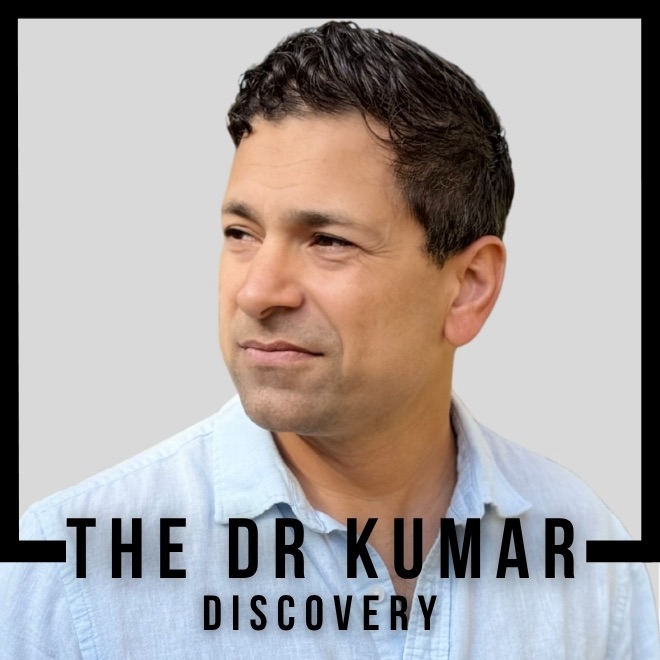Was the Women’s Health Initiative Breast Cancer Risk Actually Significant?
No, according to this critical analysis by leading researchers. The WHI’s breast cancer findings that terrified millions of women and their doctors were not statistically significant when properly analyzed. The study’s early termination and misinterpretation of relative versus absolute risk created a medical panic that has denied effective treatment to countless women for over two decades.
Dr. Kumar’s Take
This review exposes one of the most damaging misinterpretations in modern medicine. The WHI’s breast cancer “signal” was so weak that it disappeared entirely when analyzed correctly. We’re talking about a difference so small it could easily be due to chance, yet it fundamentally changed how we treat menopausal women. The real tragedy is that millions of women have suffered with debilitating symptoms because the medical community overreacted to what was essentially statistical noise.
What the Research Shows
The authors demonstrate that the WHI’s breast cancer findings fail basic tests of statistical significance. The confidence intervals for breast cancer risk crossed 1.0, meaning there was no statistically significant increase. The study was terminated early based on a pre-specified monitoring rule, but this early termination actually weakened the statistical power. When the estrogen-only arm showed a reduction in breast cancer risk, it became clear that the combination therapy findings were likely due to the synthetic progestin, not estrogen itself.
How This Works (Statistical Analysis)
The WHI used a monitoring system that would stop the trial if certain statistical boundaries were crossed. However, these monitoring rules increase the chance of false positive findings. The breast cancer hazard ratio of 1.26 had confidence intervals that included 1.0, meaning the result was not statistically significant. Additionally, the absolute risk increase was tiny: approximately 1 additional case per 1,000 women per year. This level of risk is within the normal variation seen in observational studies and could easily be explained by detection bias or chance.
Practical Takeaways
- Understand that the WHI’s breast cancer findings were not statistically significant when properly analyzed
- Recognize that absolute risk increases were minimal (about 1 case per 1,000 women yearly) even if the findings were real
- Know that estrogen-only therapy actually reduced breast cancer risk, suggesting the issue was with synthetic progestin
- Seek providers who understand the difference between statistical significance and clinical significance
- Consider that avoiding hormone therapy also carries risks that may outweigh these minimal theoretical concerns
- Ask for individualized risk assessment rather than blanket avoidance based on population-level statistics
What This Means for Perimenopause and Menopause Care
This analysis validates what many women and their providers have suspected: that the medical community’s fear of hormone therapy has been vastly disproportionate to the actual evidence. The WHI findings that changed medical practice were based on weak statistical signals that wouldn’t meet publication standards in many other fields. This supports a return to individualized care where the proven benefits of hormone therapy for quality of life, bone health, and cardiovascular protection are weighed against properly understood risks.
Related Studies and Research
- Association of Menopausal Hormone Therapy With Breast Cancer Incidence and Mortality
- Risks and benefits of hormone therapy: has medical dogma now been overturned?
- Effects of menopause on temperature regulation
- Recurrent Urinary Tract Infection in Older Outpatient Women
- Episode 27: Perimenopause, Menopause, and HRT - What Every Woman Should Know
FAQs
If the breast cancer risk wasn’t significant, why did doctors stop prescribing hormone therapy?
The medical community misinterpreted the WHI results, focusing on relative risk rather than absolute risk and statistical significance. The dramatic presentation of the findings created fear that overshadowed careful analysis of the data.
What does “not statistically significant” mean for breast cancer risk?
It means the observed difference could easily be due to chance rather than a real effect of hormone therapy. The confidence intervals included the possibility of no increased risk at all.
Should I be concerned about breast cancer if I’m considering hormone therapy?
Discuss your individual risk factors with a qualified provider. The evidence suggests that for most women, the breast cancer risk from modern hormone therapy is minimal and may be outweighed by other health benefits.
Bottom Line
This critical analysis reveals that the WHI’s breast cancer findings that changed medical practice for decades were not statistically significant. The “scratch” that caused such panic was essentially a statistical artifact. Women and their providers can now make more informed decisions based on properly interpreted evidence rather than fear-based medicine.


